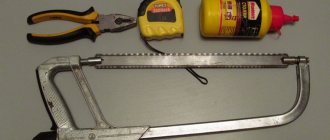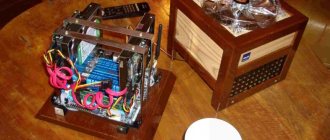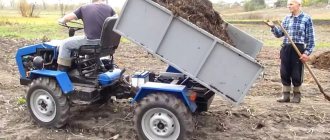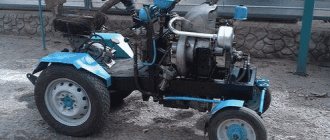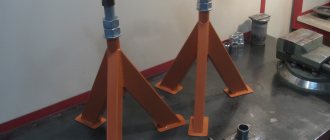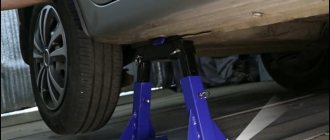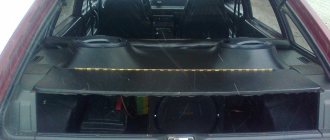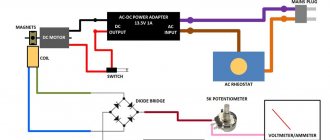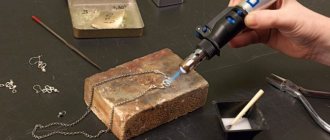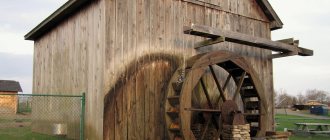In order not to rent equipment for earthworks, many people want to assemble a mini-excavator with their own hands, but not everyone achieves this dream to its logical conclusion, since the manufacture of a home-made excavator requires free time, drawings and funds to implement the plan.
Despite their small size, homemade mini-excavators are in no way inferior to factory-made equipment. They even have some advantages: light weight, low fuel consumption, ease of transportation, etc.
The size of the mini-excavator makes it possible to work in almost any area, even indoors. Such mechanisms are often used on a farm or country house for digging holes and laying underground communications to premises.
Before making a mini-excavator, you need to decide on its type. The options could be:
- Excavator based on a mini-tractor or car. The equipment will be mounted. The simplest way would be to remake it on a car basis. You can create a completely autonomous model (wheeled or tracked), which moves independently or is transported with the help of auxiliary means. The main advantage of the attachment is that it can be dismantled at any time to use the equipment for its intended purpose.
- Another option is to make a homemade mini-excavator from scratch. But this option is quite labor-intensive, as it requires specific knowledge and a huge number of spare parts.
The simplest and cheapest option is a mini-excavator based on a trailer, consisting of a supporting frame with a wheel pair, on which an autonomous internal combustion engine, hydraulic drive and specific equipment are installed.
Where to begin?
Of course, with visualization.
So that problems associated with the further operation of a mini excavator created by yourself do not bury your time and work forever, you must approach its creation with a clear understanding of what and how to do. After all, having bought a lot of spare parts, having spent countless amounts of time and effort, it is unlikely that anyone will want to eventually realize that their “craft” turned out to be more expensive than a production copy, but at the same time less effective. After weighing all the pros and cons, the first thing you need to arm yourself with is a drawing. You can either buy it on foreign websites, or spy on the Internet. If you search for the necessary information on foreign sites, remember that, for example, the American measurement system uses inches, not meters. Don't forget to convert some values to others!
Next, to all this you need to add your ingenuity, skillful hands and a set of necessary parts. But first things first.
Photo source: exkavator.ruMini excavator. Let's visualize
Preparatory stage: where to get the drawing
You need to choose a specific, clear and understandable diagram for assembling your earthmoving machine. There should not be any difficulties with the choice. Can be used:
- Reduced to scale factory diagrams of large Belarus-type excavators.
- Ready-made drawings from the Internet, posted by folk craftsmen. Interesting working options can be found not only in RuNet, but also on foreign resources.
Having selected the optimal drawing, you need to draw up an estimate and roughly determine the costs of consumables and parts.
From general to specific
There are two most common methods for creating a mini excavator with your own hands: you can install attachments on a small tractor or build an autonomous homemade mini excavator that can move independently or with the help of other vehicles. The second option is more labor-intensive. You need to make your own frame, install at least the rear axle (can be used from an old car), and the engine. If you feel technically savvy, you can combine engine parts or use Chinese motors from different manufacturers. Just keep in mind that if you assemble parts from different machines, you will have to constantly adjust these parts and make modifications to them.
Photo source: exkavator.ru The main thing is to make a start
Model selection
A properly assembled mini-excavator is in no way inferior to models created according to all the rules in the factory. It has some advantages for private use: minimal fuel consumption, easy transportation, adaptability to specific needs, low weight. You can work in any area, including warehouses and other enclosed spaces. Typically, such equipment is required at dachas, near country houses, used in digging holes and ditches, for shallow communications, etc.
There are different types of mini excavators
Types of homemade models:
- An excavator made from a walk-behind tractor, based on an existing mini tractor or just a car. It uses attachments. Autonomous vehicles are assembled on tracked or wheeled vehicles, capable of moving around the site independently. Another option is a machine that can be moved using aids. If necessary, all attachments can be easily dismantled, and the used base can be used again for its intended purpose.
- Mini excavator from scratch. A labor-intensive option for the most experienced craftsmen. It is impossible for a beginner to cope with such a task; time and money will be wasted. You will need specific skills or qualified assistants, a good amount of technical knowledge.
- A simple budget solution is a trailed excavator on a T40 trailer with a frame and a wheel axle.
An autonomous engine, hydraulics and specific equipment are installed.
Be sure to read: Excavator Dusan 225
One horse, two horse
What about “horses”? The question is reasonable, and the answer to it lies in the purposes and in the work that you will carry out on a mini excavator made by yourself. The calculation of the forces on the hydraulic cylinders for raising and lowering the boom and turning the handle depends on what exactly you are digging, then the speed of movement of the links and the movement of the pistons in the cylinders is determined. Typically, a power of 8-13 horses is more than enough.
Finding the necessary equipment or spare parts has become even easier - leave a request and they will call you back.
Do-it-yourself mini tractor from a walk-behind tractor
When choosing a conversion kit, you can take factory spare parts. But this is not suitable for those who need to break a 4x4 with significant savings.
For homemade tractors you should purchase:
- set of tools and welding equipment;
- channels, metal pipes;
- drill with different drill bits;
- hardware and other fasteners;
- Bulgarian
To properly remake a walk-behind tractor, you need to prepare two additional wheels, a chair, a hitch, pedals, and a steering mechanism
It is important to choose the right walk-behind tractor, choosing rather powerful units. This will allow you to get a productive mini tractor that can perform all agricultural functions
Creating a Frame
When using two small frames, you get a special axle that is connected by hinges and can move. This allows the wheels to make better contact with the ground and not overweight when driving over uneven ground.
- Transverse longitudinal-type spars need to be cut with a grinder and connected by welding or other fasteners.
- Bolted connections are secured by welding the seams for higher reliability.
- A mount for attachments is mounted to one end of the frame, and a tow bar for the trailer is welded.
Correct installation of the chassis
Once the attachment has been attached to the frame, an axle needs to be attached to both ends of the frame. The wheels that came with your walk-behind tractor are attached to the rear ones, but the front ones are fitted with wheels with deep tread, which can be bought or removed from an old car.
To create a high-quality chassis, you need to purchase a brake system with hubs, a steering wheel, a steering rod and column, and a gearbox.
Front wheel mounting steps:
- Select a steel profile pipe that will be equal to the thickness of the tractor's front axle.
- Wheel hubs are welded to the ends of this pipe.
- The structure must be attached in the center of the front of the frame.
- Secure the tie rods and align them with the gearbox.
- Next, fix the gearbox on the frame.
- Select the steering wheel, install it, and then the bar.
- Adjust the steering column.
In some cases, the tractor suspension is equipped with a spring shock absorber, which makes working with equipment more comfortable.
To install and secure the rear axle, you will need bearings. Next, it is equipped with a pulley, with the help of which the rotating components of the structure are launched and act on its wheels.
Correct installation of the motor with hydraulics
As a rule, the motor should be located in the front of the frame, which will make the tractor more stable and maintain its balance.
Where the motor will be located, you need to install a fastening system, supplementing it with tension belts. Mount the belt drive, which is needed to drive the rear wheels
In this case, it is important to ensure that the transfer case belt is located in the same plane with the belt, which is located on the rear axle of the mini tractor. The belt drive should be covered with a protective cover. After this, a hydraulic lift is installed on the tractor, consisting of an oil tank and a pump, a distributor, and a hydraulic cylinder
The system is connected with hoses. After this, a seat, headlights and dimensions are installed on the equipment.
Electrical equipment and braking system
- First you need to determine the location of the brake pedal, after which the mount for it and the main brake cylinder are mounted.
- The brakes are then attached to the brake drums (located on the front wheels) using hoses.
- The brake system must be checked for leaks, and the drawings must be reviewed to avoid errors during its installation.
An all-wheel drive tractor requires the installation of electrical equipment and sensors on the dashboard. A liquid cooling indicator, a fuel level and oil pressure sensor, and an ignition switch are required.
Additionally, you can install a canopy and casing, which will make working with the equipment more comfortable. You can watch the video on how to properly assemble a mini tractor.
Hydraulics. Ours can do this too
In fact, American colleagues in the workshop prefer to install ready-made hydraulics. The option is not the cheapest, but requires the least labor. But our people are not looking for easy ways! Armed with theoretical knowledge, you can try to make hydraulics with your own hands. But we warn you: this process is quite complicated.
So, the hydraulic system of a full-fledged excavator consists of 4 sections (this is the minimum): a rotary platform, a bucket, a boom and a handle. As for the rotary platform, you can refuse it, since complex work, as a rule, is not performed on a homemade mini excavator. We install 4 hydraulic cylinders (this is quite enough to turn and raise the boom and handle, and control the bucket). Hydraulic cylinders from the MAZ or KAMAZ cab lifting mechanism are perfect.
Photo source: exkavator.ruAnd here is the basis of the machine
Mini excavator design
Most homemade models have the same layout as a factory automobile excavator. The main structural elements consist of the following components:
- a supporting frame on tracks or a motorized excavator;
- a motor that drives the hydraulic system;
- rotary support system;
- hydraulics (hydraulic pump, oil filter, tank, manual control lever, hydraulic cylinders, hoses);
- two-section boom with bucket.
A good solution would be to install a homemade excavator on a T 40 or to make a trailer yourself from components on which to install: an engine, a tank, a wheel axle from an old car. To create stability during operation, it is advisable to provide additional reinforcement in advance, consisting of a pair of support “shoes” that will eliminate the possibility of tipping over, that is, the excavator on a vehicle chassis will stand securely during operation. The engine used is often compact Japanese or cheaper Chinese internal combustion engines, the power of which reaches 15 kW.
Working equipment: ready-made or made?
The simplest option is to install a finished boom along with a hydraulic system. You can also install a boom on your homemade mini excavator, for example, from an old front-end loader. If, of course, you have access to it. In addition, it will need to be adapted for earthmoving purposes. Another “simpler” option is to make an arrow from a square pipe with your own hands.
Photo source: exkavator.ruArrow of a homemade mini excavator
We make a wood splitter
Among other things, you can make a wood splitter from a walk-behind tractor. To do this, you will need to grind a cone on a special machine, as well as a thread. After this, the finished cone must be mounted on a shaft that has suitable bearings. Then you need to install a flange at the end of the shaft, as well as a sprocket. It can be taken from a motorcycle wheel.
You can fix the cone on the shaft using a bolt. After this, between the motor and the shaft itself, you need to install a spacer made of pipes, as well as a pair of nuts. This will help tension the chain. In order to make supports for the shaft, you can take supports from Zhiguli cars. The motor must be taken from the walk-behind tractor. With the help of such a redesigned design, you can easily cope with splitting firewood.
Bucket: the stronger the better
The bucket is the direct component of the machine that will come into contact with the working surface. In order for your DIY mini excavator to serve you (let’s not guess how long!) it is recommended to use durable metal. The minimum set is: 2 sides and a bottom. The bottom, which is used as a rectangular plate, is attached to the vertically installed sidewalls by welding. Already tacked to the sidewalls at one edge, it is heated by a burner and gradually bends along the contour of the sidewalls. Don't forget to use pot holders. It is recommended to additionally reinforce the upper edge and bottom with steel plates. After all this has been done, you can weld the teeth.
Photo source: exkavator.ruBucket. Still toothless
Photo source: exkavator.ru And someone has already “cut” their teeth
homemade trailed mini excavator
Good day. I want to assemble a trailed mini excavator with my own hands, but after searching the forums I haven’t found anything useful ((In particular, I’m interested in help in terms of “materials”
I want to assemble a trailed mini excavator with my own hands,
The guys made mounted ones. It makes no difference whether you hang it or screw it onto a cart.
The guys made mounted ones. It makes no difference whether you hang it or screw it onto a cart.
There is a difference if there is no tractor
It might be cheaper to hire. and there is less hassle. manually is also quick. An excavator must move: how else can you work on it? We once had to make 2-meter holes for stepchildren at a transformer substation. You can't get in with the equipment. So 3 men dug these holes for us in a day. I couldn’t believe my eyes!
It might be cheaper to hire. and there is less hassle. manually is also quick. An excavator must move: how else can you work on it? We once had to make 2-meter holes for stepchildren at a transformer substation. You can't get in with the equipment. So 3 men dug these holes for us in a day. I couldn’t believe my eyes!
1) moving around the excavation site will be done manually (or using a bucket), transportation on a tow bar 2) I don’t want to hire and don’t want to waste my nerves. It’s better to do it myself. My construction site isn’t on fire. There’s bare earth on the site! There’s nothing yet! Imagine a foundation for a fence around 10-15 acres? + dig a trench for water + house foundation + sewerage + cesspool, etc. + garage foundation + place to work (I do auto repair) + unforeseen plans = ? 10000?20000??30000. I don't think. + his brother has another plot
Pump. It can be this way, or it can be that way
When installing a pump, you are guaranteed to ask yourself the question: axial piston or gear? Let's just say that the choice is yours. The first is more expensive, but also more effective. Of the gear types, NSh-10 has proven itself well. You can borrow the experience of Russian enterprises: two NSh-10 pumps and two R-16A distributors, which are connected in parallel. Based on the performance of the pump and hydraulics, the displacement of the fuel tank is selected.
Photo source: exkavator.ruGear pump NSh-10
Do-it-yourself mini tractor from a walk-behind tractor
The desire to have a full-fledged “iron horse” on your farm is inherent in any farmer, with all their advantages, walk-behind tractors are not a full-fledged replacement for a tractor. It’s one thing to “run” across arable land behind a walk-behind tractor, and quite another to cultivate the soil while sitting behind the wheel of a mini tractor.
Getting to know mini tractors from a walk-behind tractor with your own hands
But the cost of a mini tractor is quite high. Therefore, the desire of many involved in agriculture to create their own mini tractor from everything that is available on the farm is understandable.
Today, the construction of tractors of your own design occurs in two ways: creating equipment from car parts or agricultural machinery or upgrading walk-behind tractors into mini tractors. The latter have already been called motor tractors.
Where everyone can talk about their experience of creating a mini tractor from a walk-behind tractor with their own hands. Here you can get acquainted with the drawings of a mini tractor from a walk-behind tractor with your own hands, discuss the most important technical details, or view a photo or video of a mini tractor with your own hands.
Today, motor tractors are presented in three categories:
- completely homemade;
- modernized walk-behind tractors to the level of a mini tractor using factory kits;
- factory motor tractors made on the basis of walk-behind tractors.
DIY mini tractor
When converting walk-behind tractors into mini tractors, all sorts of parts and mechanisms available to the amateur designer are used. Often such models are made, as they say, “by eye”, without preliminary calculations. Despite the fact that DIY drawings of motorized tractors from a walk-behind tractor are available on the Internet, each master ends up with his own original model. The main disadvantage of such motorized tractors is the use of catch from equipment created to perform other tasks not related to agriculture. First of all, this concerns gearboxes that are removed from cars. And it’s not always possible to talk about the comfort of working on such a tractor. Nevertheless, those wishing to convert their walk-behind tractor into a mini tractor are only increasing.
In order to properly re-equip your car without violations, we recommend that you familiarize yourself with the list of documents that must be submitted to the traffic police.
Using factory
The demand for the modernization of walk-behind tractors has found a response both directly from their manufacturers and from companies with the production capabilities to create kits for converting walk-behind tractors.
The easiest way to bring your walk-behind tractor closer to the image of a tractor is to purchase an adapter - a two-wheeled cart with a driver’s seat, a powerful drawbar and a device for mounting towed equipment.
A complete kit, as a rule, includes a frame, footrests with pedals, a brake system, a steering column assembly, as well as a front beam with hubs and brake discs. The delivery also includes a rear linkage with a lift (usually manual), and at the customer’s request it can be equipped with an electric lift.
Having such a kit, you can assemble a mini tractor using a welding machine, plumbing tools and wrenches. You also need to worry about the wheels for the future “iron horse” - these can be wheels from a passenger car or similar ones from a walk-behind tractor.
Video of a mini tractor made from a walk-behind tractor with your own hands.
Simpler but more expensive
In order not to rack your brains over how to make a mini tractor from a walk-behind tractor with your own hands, you can purchase a ready-made motorcycle tractor produced by the manufacturer.
They are distinguished by a more advanced design than the first two options, as well as the presence of all the components necessary for agricultural machinery. The cost of such a device is lower than a mini tractor, but higher than making it yourself from a factory kit.
We make a mini tractor from a Neva walk-behind tractor with our own hands
By making a mini tractor from a Neva walk-behind tractor with your own hands, you will minimize the cost of time and effort, which will result in the appearance of an excellent device for doing all the work on your garden plot. In addition to the adapter, you can purchase: a plow, hiller, harrow and other devices.
You can also upgrade a walk-behind tractor into a mini tractor with your own hands from unused parts of other equipment. This conversion option will take more time, but it will pay off with low costs.
To create a mini tractor from a Neva walk-behind tractor, you will need the following components: the walk-behind tractor itself, metal pipes, corners, sheets; two wheels; welding machine; driver's seat; set of tools.
Step-by-step process for upgrading a walk-behind tractor into a mini tractor
Step 1. We develop the design of the kinematic scheme. The main thing in this scheme is the balance of the structure so that additional loads do not destroy future equipment. This diagram is developed independently, or you can use a ready-made diagram with a kinematic image of a mini tractor. Step 2. We make a frame from angles and pipes
During the manufacture of the frame, it is important to consider the location of the fork and bushing, which ensure the rotation of the trailer. Step 3. Making the body
For the body, an excellent material for manufacturing would be steel sheet. The height of the sides of the body should not exceed 30 cm. Step 4. Install the driver's seat. Step 5. Install attachments. Step 6. We check the performance of the manufactured mini tractor. Step 7. Painting.
We will consider one of these options for creating a mini tractor using the example of the Neva MB-2s 7.0 PRO walk-behind tractor. This walk-behind tractor is equipped with a Subaru EX 21D engine. If you plow your garden plot with such a walk-behind tractor, then within a week it will be difficult to straighten up. To avoid such consequences, we will convert the walk-behind tractor into a mini tractor.
Since the SUBARU engine does not have a 12V output, the headlights are installed for decoration. To use them you need to install a battery pack or battery. When plowing the land, the imperfections and inconvenience of this technique are not noticed. This mini-tractor was tested on hard-to-plow land. And although during the creation of the tractor its traction characteristics were questioned, the tests were very successful.
Also, a big plus of this machine is that the driver and the front part of the mini tractor are additional weight, which helps the drive wheels to better grip the ground. Installed levers: gas lever - on the right, axle release lever - on the left. To lift the hitch, a sprocket with a diameter of 150 mm is used. It is brought out by a bicycle chain to a lever or a manual jack.
The installed Volga wheels were found in a landfill, pre-cleaned of rust and painted. The pedal arrangement is similar to that of a car: the right pedal is the brake, the left pedal is the clutch. Speeds are switched using a lever. Shoe brakes taken from the Riga-7 moped are installed.
The principle of operation of the clutch pedal is the same as that of a walk-behind tractor: when pressed, the minitractor moves, if you release it, it stops. There is a cable connected to the left armrest lever that unlocks the axles. It is used when turning is necessary. There are no special nuances when turning right or left. The right armrest houses the throttle lever. The hitch lift lever is located under the seat.
The wear on the drive belt on the gearbox is the same as on a walk-behind tractor. The sum of the weight of the driver and the front part of the tractor is 100-110 kg, which keeps the front of the mini tractor from lifting when the plow is deepened. The size of the processed track remains the same as the walk-behind tractor - 630 mm. Stability problems arise if plowing goes deeper than 20 cm.
Additional equipment of the walk-behind tractor
I would like to note that most homemade products can be divided into several broad categories - standard attachments and a major reconstruction of a walk-behind tractor, when a motorized unit will act as the basis. Most summer residents and gardeners have access to the following improvements for mechanized tillage devices:
- snow removal system;
- system for moving bulk building materials: sand, crushed stone, etc.;
- lawn mower for cutting lawns and removing weeds;
- a system for planting and digging potatoes, which greatly simplifies the cultivation of this vegetable crop;
- plow and devices for hilling green spaces.
But before improving the walk-behind tractor, it is important to understand that the device must have sufficient power reserves. Although in most cases, gasoline and diesel devices were developed at the production stage with a reserve of power characteristics and it would be simply stupid for a home craftsman not to take advantage of this
If we consider walk-behind tractors powered by electricity, they are not always suitable for experimentation. It is for this reason that homemade products are used for equipment that runs on liquid fuel.
This is interesting: Ways to increase speed on a walk-behind tractor - this is important to know
Communities › Kulibin Club › Blog › HOMEMADE MINI TRACTOR LOADER /Project completed.
I posted it at my place, but forgot to place the tractor in the Kulibin Club community.
Hello everyone, the other day I posted an unpainted forklift, but now it is ready and will be sent to the customer today. The project was made for Pavel from Balashov. ATTENTION! Be kind and don’t ask about the price here, don’t ask in private. I don’t announce prices and don’t accept orders. The post is purely to encourage people who want to assemble a tractor for themselves. This loader has a regular bucket.
CHARACTERISTICS are the same as on previous loaders:
1. PERMANENT all-wheel drive. 4x4 2. Load capacity without counterweight is no more than 200 kg, with counterweight recommended no more than 250-300 kg. 3. Homemade steering knuckle, reinforced. 4.Boom lift 2.2 5.Weight approximately 500-550kg 6.Length 1.9 without boom and 2.4 with boom and 2.9 with bucket 7.Height 1.4 8.Width 94 cm 9.LIFAN motor 15hp, with starter + generator. 10. Frame and boom struts made of 12 channel, boom 10 channel. 11. Ladle, 3 metal. 12.NSh-10. 13. Distributor P-40, 3-section
And here's how it all happened:
Plan for making a homemade mini tractor from a Neva walk-behind tractor
The main difference between a mini tractor and a walk-behind tractor is that when performing any work, the driver sits comfortably on the seat. Therefore, when converting a Neva walk-behind tractor into a mini tractor, there are two options for completing the work:
- purchase a ready-made module with a wheel pair that allows you to control mini-equipment while sitting;
- Assemble the attachment with wheels yourself.
Let's consider this option in more detail, based on the simplest design without a drive to the second wheel pair and a full-fledged steering column.
Of course, you can design a device with a steering column and all-wheel drive, but this is more difficult to implement, and also requires many additional components and skills from the master assembling it, and does not provide any special advantages in the work. And in fact, only the motor remains from the walk-behind tractor.
To control the mini tractor, we use the rotation of the entire engine and transmission unit with a standard walk-behind tractor steering wheel, so we need a module that is attached to the unit on a hinge and has a seat, as well as a hitch for towed devices. Thus, it is like an extension of the walk-behind tractor, with trailed units attached to it.This is the simplest and most cost-effective option. A frame with a wheel pair is assembled, on which a seat is installed, and two trailer units are mounted, for attaching to a walk-behind tractor and for connecting soil-cultivating or transport units.
